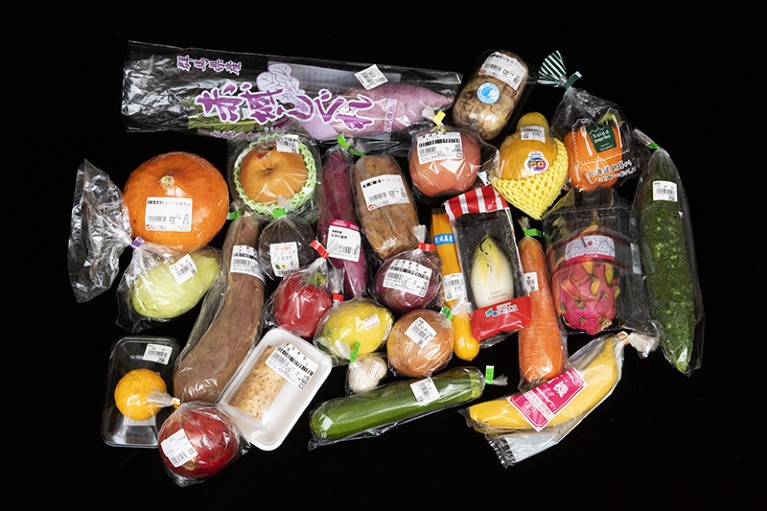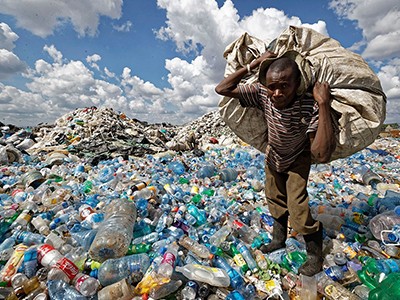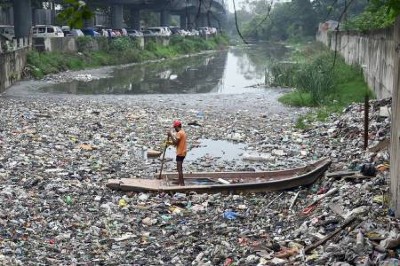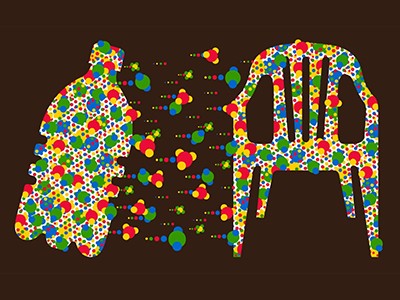[ad_1]

Plastic wrappers are known to leach some chemicals into food.Credit: Carl Court/Getty
After a year of trawling through scientific reports and national regulatory databases, scientists funded by the Norwegian Research Council have compiled a list of more than 16,000 ‘plastic chemicals’ — compounds found in plastics or thought to be used in them, including raw ingredients and additives such as stabilizers and colourants.
Plastic pollution: Three problems that a global treaty could solve
Of these, at least 4,200 are “persistent, bioaccumulative, mobile and/or toxic”, the group found. That “is quite staggering”, says lead author Martin Wagner, an environmental toxicologist at the Norwegian University of Science and Technology in Trondheim. The group also discovered that hazard data were unavailable for more than 10,000 chemicals, and for more than 9,000 there was no publicly available information about which plastics they are used in.
Solid information on all these chemicals is difficult to come by, in part because industry doesn’t always share proprietary information, Wagner says. That makes the effort to compile the known data all the more important, researchers say. “This is the most comprehensive report to date,” says Bethanie Carney Almroth, an ecotoxicologist at the University of Gothenburg in Sweden, who was not involved with the effort. “The numbers presented are jarring.”
The report was released on 14 March, in time for the next round of negotiations for a United Nations treaty on global plastic pollution. Scientists have been campaigning for the treaty, which deals with all aspects of plastic production and waste management, to include a list of plastic polymers and chemicals of concern — some of which are known to leach into food, water and the environment, with impacts for human and ecosystem health. Discussions regarding the treaty continue in Ottawa next month and are scheduled to conclude in Busan, South Korea, in December.
Landmark study links microplastics to serious health problems
The report notes that although nearly 1,000 concerning chemicals are regulated by global efforts such as the Stockholm Convention on Persistent Organic Pollutants, more than 3,600 are not. The authors assign these chemicals to a ‘red list’ that should be regulated, they argue. “The message is very clear,” says Wagner, who is a member of the Scientists’ Coalition for an Effective Plastics Treaty, a grass-roots group that has formed to advise the treaty process. “Something needs to happen,” he adds, although the report’s authors decline to be proscriptive about whether treaty delegates should put in place bans or other regulatory measures.
The Plastics Industry Association, a group based in Washington DC that aims to “protect, promote and grow the plastics industry”, did not respond to Nature’s request for comment. A statement from Kimberly Wise, vice-president of regulatory and technical affairs at the American Chemistry Council (ACC), a trade group in Washington DC representing US chemical companies, says: “Plastic additives provide many important benefits that enhance the function and durability of plastic products, enabling us to do more with less….Unfortunately, today’s report seeks to advance a hazard framework that ignores real-world exposures and paints an incomplete picture for regulators and the public.”
Pervasive hazards
Many attempts to regulate chemicals, such as the 1976 US Toxic Substances Control Act, take a risk-based approach, evaluating a chemical by taking into account both its hazards and the likelihood of exposure to it. The authors of the report instead use a more precautionary approach that looks only at hazards — in part because plastics are so pervasive that evaluating exposure would be logistically problematic. “This is necessary,” agrees Miriam Diamond, an environmental chemist at the University of Toronto, Canada.
How to make plastic less of an environmental burden
Wagner was surprised by how many chemicals of concern the team found, and how prevalent they are. In the past, many researchers and others have argued that most chemicals of concern were “legacy compounds”, no longer really used in plastics production, he says. But the team found convincing evidence that plenty are still in use. “We found more than 400 chemicals of concern across all major polymer types. That was surprising,” Wagner adds.
Given the huge number of chemicals of concern and the lack of data for many, the team divides them into 15 groups for priority action. These include phthalates (often used to make polyvinyl chloride more flexible) and bisphenols (used to make durable polycarbonate).
The report also recommends getting companies to be more transparent about what is in their plastics, to fill in many of the information holes. “It is not possible to mitigate harm, to the environment or to humans, given these knowledge gaps, and it is completely irresponsible [for policymakers] to allow this to continue,” says Carney Almroth.
“We are encouraged that today’s report emphasizes the need for greater transparency,” says Wise in the ACC statement. “The International Council of Chemical Associations (ICCA) supports these efforts and is already developing an additives database and risk assessment framework to provide critical information to regulators around the globe.”
Scientists can help, Wagner says, by finding out about the hazards of chemicals with data gaps and performing meta-analyses on well-studied compounds. The world also needs better analytical techniques, he says — such as improved bioassays that can measure the effect of a chemical on living organisms.
It’s unclear whether the plastics treaty will be completed in December. So far, the negotiations have been hampered by a few petrochemical states that are resisting strong regulation of plastics production, Wagner says. “We’re at a stalemate, I’d say,” he adds. “My view is, the evidence is very clear. Governments just need to get their act together.”
[ad_2]
Source Article Link




